“OMG, this is gorgeous! Hmm, it’s smaller than I expected. What the deuce? The arms and legs don’t move!”
Such were my initial impressions as I opened the packaging on LEGO set 853967: The Wooden Minifigure.
I spent the afternoon glaring at it as I walked around the house doing other things, periodically stopping to pick it up and twist the limbs harder, since I was surely mistaken and they must move. My wife’s initial enthusiasm for the piece was quickly infected by my ire and she commented, “The cool thing about LEGO minifigures are all the accessories that fit in their hands. It’s too bad this is at a different scale.”
This was actually an encouraging thought to me, though. I replied with rekindled enthusiasm, “Not so, good wife! These hands are designed to fit a 2×2 round brick just so!” Presently, we removed the mix of random coloured bricks (I shouldn’t say random as I am certain that they are the same carefully chosen bricks in all sets, but the colours are a mishmash of bright hues) and quickly assembled a pencil, more or less, out of the provided 2×2 round bricks, and inserted it into the fellow’s reliable little, yellow plastic hands from which it slipped right on out and fell to the table.

My jaw dropped, and my brow followed suit. “There is NO CLUTCH?!”
That is correct. The fellow has wooden limbs, and his hands clutch nothing. You are obliged to turn the hands so that items balance in them.
I admit I was in a black mood for a couple hours thereafter, stewing over the fact that with some basic wood tools I could likely build a reasonable facsimile out of a chunk of firewood, with articulated arms and legs, in an afternoon, bill carpenter rates and still sell it cheaper than LEGO’s mass-produced-in-Vietnam paperweight. Then I looked over at the stiff with outstretched arms and said, “He might as well be in a body cast.”
Suddenly, I remembered that I am a photographer and not a carpenter (I am a carpenter), and my imagination can see beyond blueprints. “Yes, he could be in a body cast!” I mused. “Or… dancing! He only lacks a partner.”
I went to my toy drawer and scanned over the figures till my gaze fell on a Marvel Legends Wasp. A perfect match, as she is a head shorter than he, and can believably be minifigure size anyway. I set up a quick dancing pose on my desk and was immediately enamoured. This has inspired a whole series of relationship-themed photos.
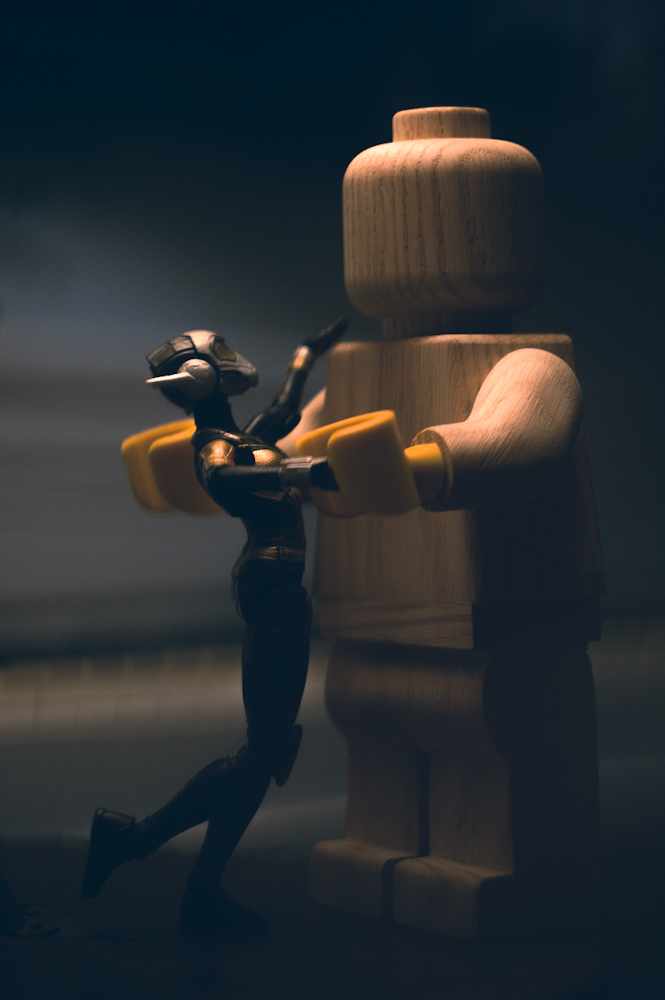
From then on, it actually became a fun challenge to see what activities and emotions this zombie-posed minifigure could pull off. By changing the camera angle and scene context, you can get anger, desire, elegance and more. He can do push-ups, breakdance, waltz, carry someone, hug and much more. Or he could be a zombie in a body cast. Basically, this figure is absolutely as good as your imagination, which I suppose is what LEGO is all about.
The other type of photography that this is great for is home decor and still-life. Beyond being a toy, it is a beautiful piece to display on a table in your home. It has a good, minimal look that blends into general decor well, but is simultaneously curious enough to draw and hold your attention if you are so inclined.
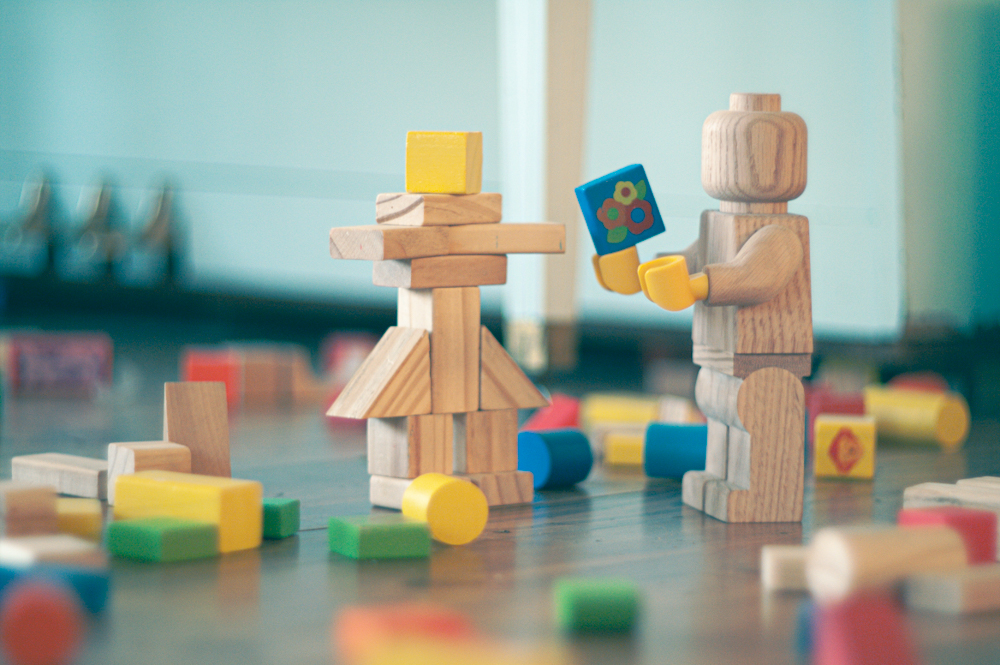
I will return to being a carpenter for a moment. This figure is made of wood. Wood has some peculiarities that plastic does not. Foremost among these is that while plastic repels moisture and washes easily, wood is absorbent, and stains. Even fingerprints will stain this beautiful red oak. It is dry and just itching to soak up any oil that touches it. Mine already has fingerprint oil stains after a few weeks of intermittent play. This highlights another feature of the model, which is the potential for customization. If you are a maker, this is a lovely blank canvas to sculpt, cover, colour or build upon. If you want it to remain light and natural I recommend Benjamin Moore’s Stays Clear Flat Acrylic Polyurethane. At least two coats with a 320-grit sand between coats. Personally, I plan to antique mine, fume it with ammonia and finish it with oil, which is one of my favourite looks for oak as it retains the natural wood texture.
Conclusion
It is a real pleasure to have this figure in my house and in front of my camera. It certainly makes one stretch their creative imagination. However, it is vastly overpriced and underdeveloped. Consider the engineering, articulation, and quality paint job on a plastic figure that sets you back $150. Then look over to the bare block of wood with two rotating pieces of plastic for hands that won’t clutch. Now compare the two. It’s sad. If you are a diehard LEGO nerd, then it might be worth it. But of course the balance of value, money and happiness is a very individual one. Personally, I feel LEGO went for money over value on this in a big way. But happiness is in one’s own hands, and my clutch isn’t bad. I still may cut it apart and add joints. This could be fun.


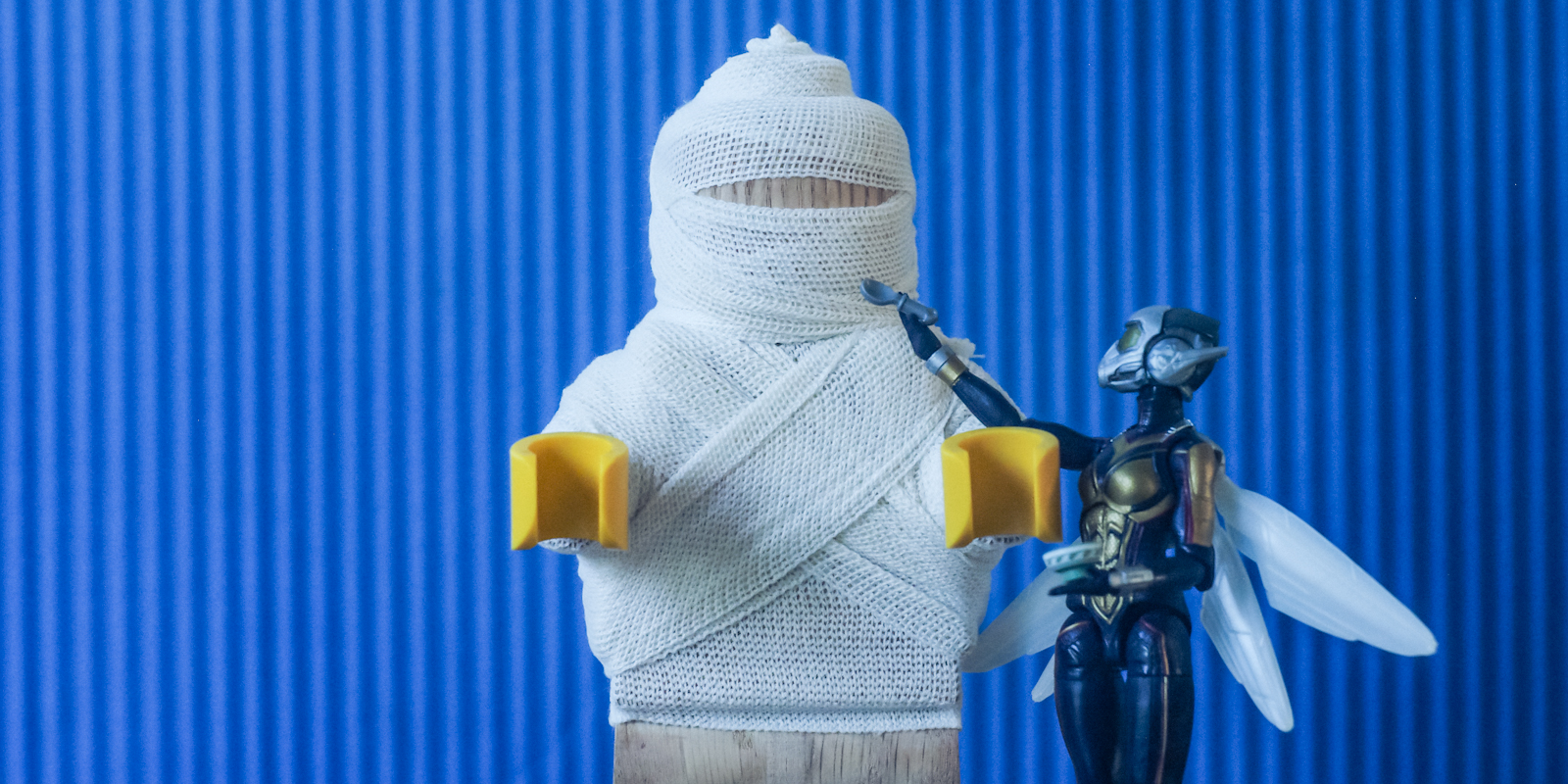
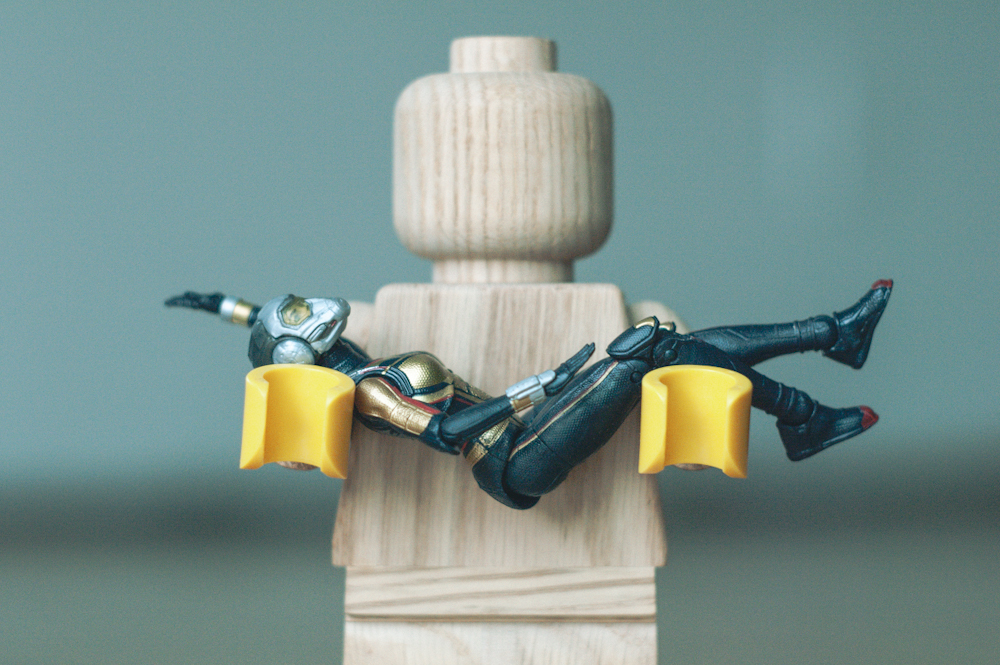



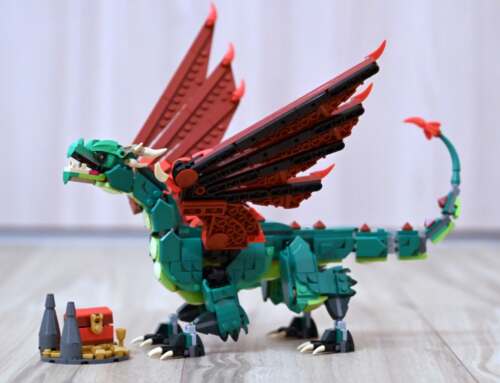

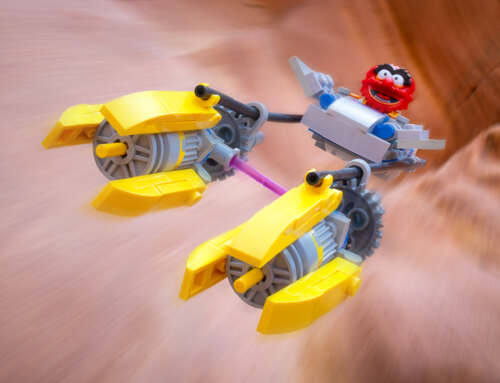

Great review Matthew. I like how you took this hunk of wood and made the best of it. You bring up a great point about what $150 can get you in our toy world. A lot more than this unarticulated piece of wood. Your pictures are fabulous and a testament to your creativity in the face of an immobile block of wood. I look forward to seeing a photo of yours when they are properly finished (maybe with those articulated arms?).
Matt what a good review. The photographs you took with a $150 piece of wood, were very creative. I’m not sure what I would have come up with. It is a very cool piece of history and definitely has a niche following, but I appreciate the fact that LEGO went back to their roots. It would be cool if they created the duck.